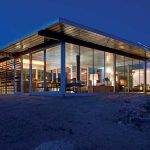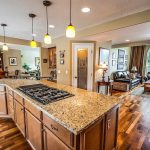Maintenance and repairs
It’s important to know when soffits and fascias need to be replaced; if they’re old or worn then your home could be at risk of damp or water damage. That said, soffits shouldn’t require repairs as they should be free from any particular weathering, and the material specified fit for purpose. In terms of maintenance they should be more of a cosmetic nature, e.g. you may need to do a re-paint if necessary.
Facetious fascia
The fascia in particular is subject to damage from the elements and if of natural materials will require regular maintenance. Indeed, replacement or repair of fascia depends on the type and quality of the material used. Initially, the most important decision to make is whether there’s a need for replacement or whether simple repair or maintenance will do. If the existing material is wood and the damage is superficial, then simple redecoration should suffice. Sandpaper or any other related method can be used to clean the surface which can then be painted with good quality paint. There are a number of weather-proof paints available on the market; you can use these to enhance the life of the wood.
The fascia in particular is subject to damage from the elements and if of natural materials will require regular maintenance.
To ascertain whether a fascia needs attention, look for peeling paint, stains, crumbling wood and loose gutters. If you have a doubt poke the surface with a sharp tool. Decayed wood crumbles easily.
Fascias covered by aluminium or uPVC vinyl covering are more difficult to check; one problem with such covering is that it can hide decaying wood until the condition is too advanced to repair easily. As previously noted though, good detailing should eliminate this and if the fascia and soffit are correctly fitted and the roof finish is in good condition then the timber boarding will remain free of damp.
As they generally don’t need to be replaced and can last for years, uPVC fascia tend to be used nowadays but you may wish to replace it if the material has faded or become brittle.
Doing it yourself
First off, a word of warning about DIY repairs. You may be tempted to cover up damaged or decayed fascia with uPVC, as a lot of people do, but this will only make the problem worse. Always remove the damaged material before replacing it, it’ll be worth it in the long run. If you reclad over sound timber with uPVC make sure you do not cover over existing soffit vents as this can cause a big problem down the line with lack of ventilation and condensation in your roof. (See Cladding, above.)
To inspect and replace fascia boards, begin by removing downpipes, gutters and brackets or other fasteners. To simplify reinstallation, measure and record the highest and lowest points along the gutter before removing it. Gutters should slope at least one-16th inch per foot or 5mm per meter run toward downpipes.
To remove a damaged board remove the moulding strip, if there is one at the top, with a flat crowbar. Then detach the board from the rafter ends or from the separating board, the fascia backer. If the wood to which the fascia was attached is decayed, it must be repaired. Minor rotted areas can be scraped away, the area treated and missing material replaced with epoxy or acrylic wood restorer.
Repairing severely rotted rafter ends may require a professional carpenter, but sometimes short lengths of timber can be fastened alongside the rotten wood to reinforce or replace ruined areas. Before doing that, gouge or saw away as much decayed wood as possible and saturate the rafter with wood preservative. While the fascia is off, inspect the space enclosed by the soffit to make sure it is ventilated: if the roof space is insulated, check that air can pass freely through a mesh vent from the outside into the roof space above the insulation.
Take a piece of the existing fascia to your local builder’s merchant to get the right size. Fascia timber has to be flat and straight and contain no defects other than small tightly attached knots. Long lengths may have to be delivered, but using these means fewer end-to-end joints than short lengths and may last longer.
New softwood goods should be supplied as pressure impregnated. Any cuts made on site should have the freshly exposed end grain treated with preservative to maintain the overall integrity, prior to putting in place.
Catherine Doran.
Additional information: Ian Crockard, Crockard Building Design, 24 Ballyalgan Road, Crossgar, Downpatrick, County Down, BT30 9DR, tel. 44 831 566, www.cbd-architecture.com, and John Boyle, M.O.M services, Suite 1, Shanowen Business Park, Shanowen Road, Santry, Dublin 9, tel. 01 830 3388, www.managemom.com







